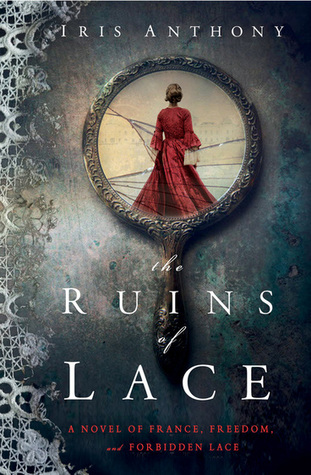Words cannot describe how in love I was with Ruins of Lacewhen I first read a sampler of it in the BEA (Book Expo America) Buzz Books 2012. Filled with intrigue and mystery, Ruins of Lace centers around what else? Llace. Who knew so much emotions could revolve around a simple object like lace?
Ruins of Lacefollows 6 characters, including one dog, as they live in 1600s France. Lace has been banned in France by the king, yet smuggling continues. Lace is such a desired object that legions of young girls go blind in the production of lace. The stories are all interrelated and connected by the shared object: lace.


The writing of Ruins of Lace is lyrical and slow, which makes the book so good. Readers are taken back to 17th century France, with the aristocracy still in place. Despite the setting of a place that’s more than 400 years into the past, the universal emotions of love, greed, desire, loyalty and more make the book relatable no matter the time period. One of the characters describes his love for a girl, “Care! Care was contemptible. Care was cowardly. I wanted more than fondness and friendship.”
Lace is such a simple object that it’s hard to imagine how it can play such a big part in the lives of the characters and be the central object in a book, but after reading Ruins of Lace, I can understand. Lace is a luxury product and everyone yearns for it. Humans are willing to sacrifice everything.
The quote I loved the most in Ruins of Lace was “We were but mortals, and we were bound, the both of us it seemed, to fail at what our hearts wanted most.” That line spoke to me because as humans, we reach for what we want, trying, and we may not get it. However, that line also speaks volumes about the book. The characters, all six of them, have their individual hopes and dreams and in the end, they may or may not reach their goals. In the process of that journey, they all lose something, changing that person.
The stories are told from the viewpoints of the characters. One character may seem like the villain in another character’s viewpoint, however when readers read the view points of the “villain”, readers realize that there’s no clear “villain” and no clear “hero”. It’s funny perhaps, that the book revolves around lace, something so pure and white (even lace with the smallest/lightest stains are rejected), yet shows the world in shades of gray. (Not an allusion to the novel. Not in the slightest.)
The story of Ruins of Lace is a compelling story that shows how a simple weaving can value so much to people and the complex story of 6 people whose lives are all intertwined.
Review copy provided by the publisher via Netgalley
Ruins of Lace came out on October 1st, 2012

